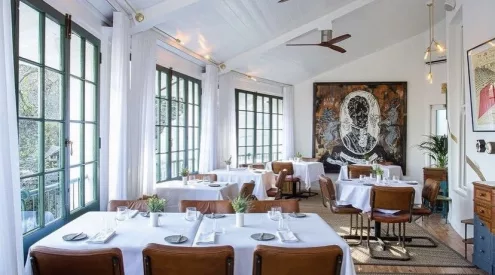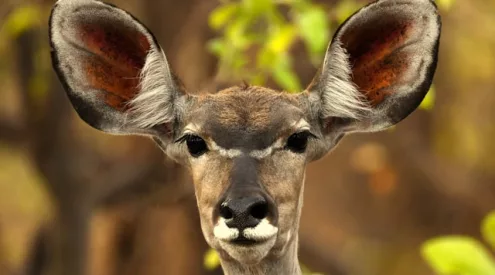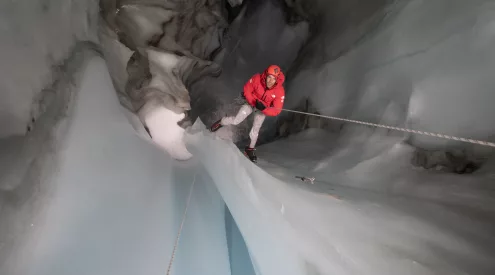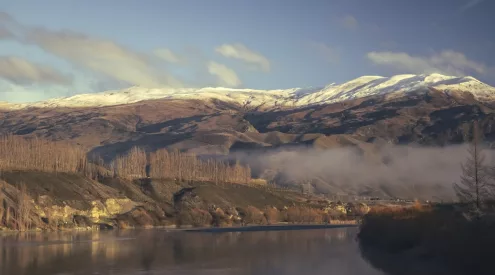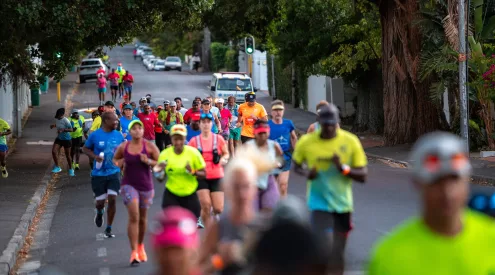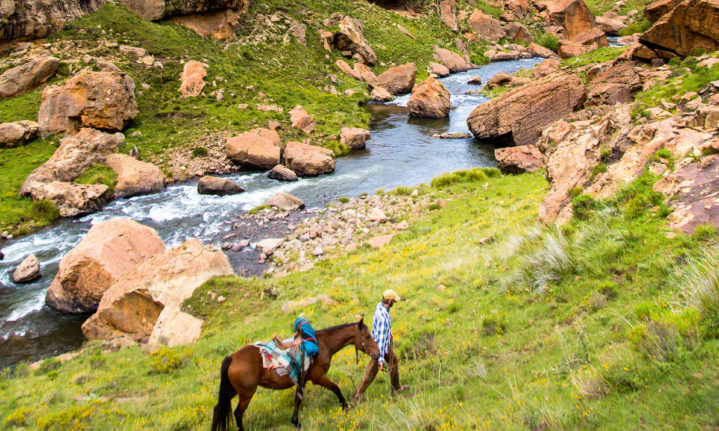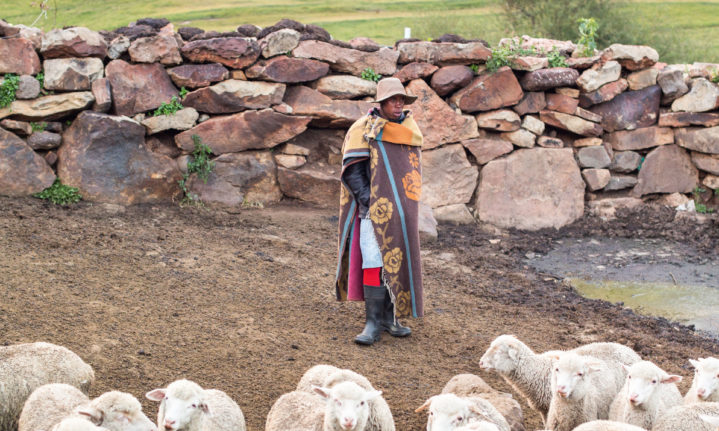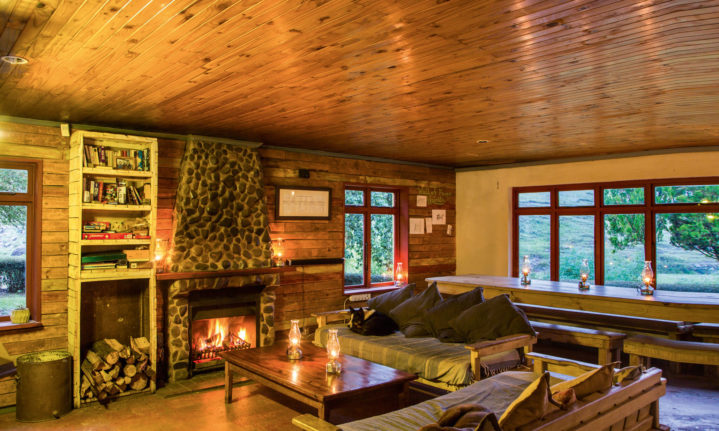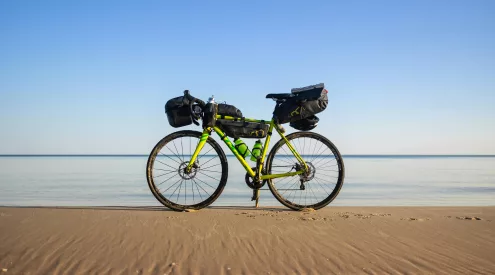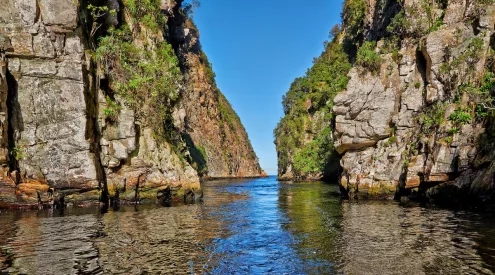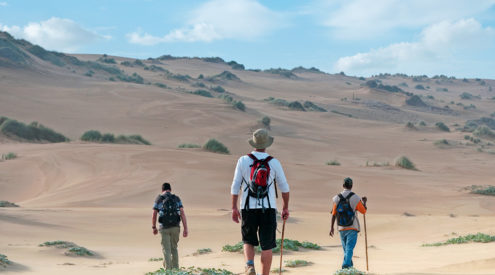Khotso Lodge’s new accommodation in Ha Thamatu offers an ideal base to experience the simplicity and beauty of life in rural eastern Lesotho.
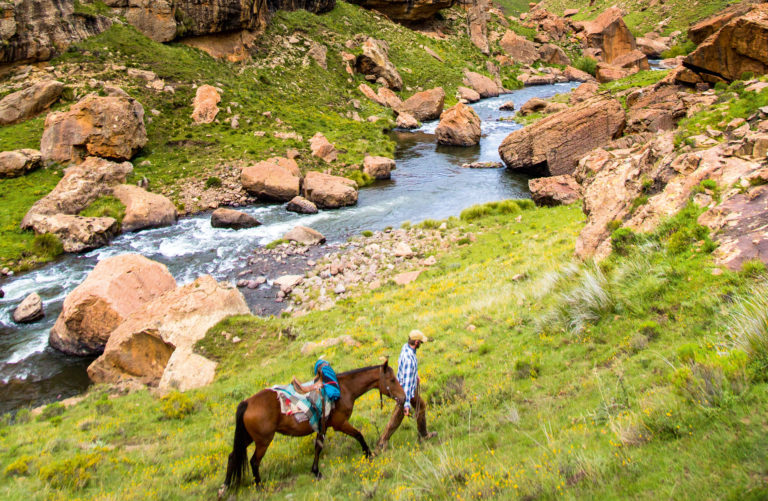
The second day’s outride from the lodge includes river crossings.
What Three-day horse trail
Where Sehlabathebe National Park, Lesotho
Who Teagan Cunniffe
At 9pm on a Friday night, the door to our rondavel opened. We turned from the fire and peered out through the doorway, where a stranger’s face shone dimly back at us from the gloom. The man was wearing biking gear and had that worn-out expression that comes with an unexpectedly-long day’s journey. We were equally surprised to see one another: this deep into Lesotho, you encounter few other tourists. We welcomed him inside and the grateful traveller joined us with stories of his road trip.
Our day had started with the stamping of our passports at the Bushman’s Nek border post, and meeting our horses. Mine was Slowsaw, a Basotho pony with curious eyes and a quick gait. Then onwards into grassy transfrontier Sehlabathebe National Park, splashing through rivers with cameras held high, and 1,400 metres up, up, up through Bushman’s Nek Pass. We passed herders going in the opposite direction, and Khotso Lodge’s owner, Steve Black, pointed out shallow ponds where endemic Maluti minnows live, surviving the altitude and sun exposure.
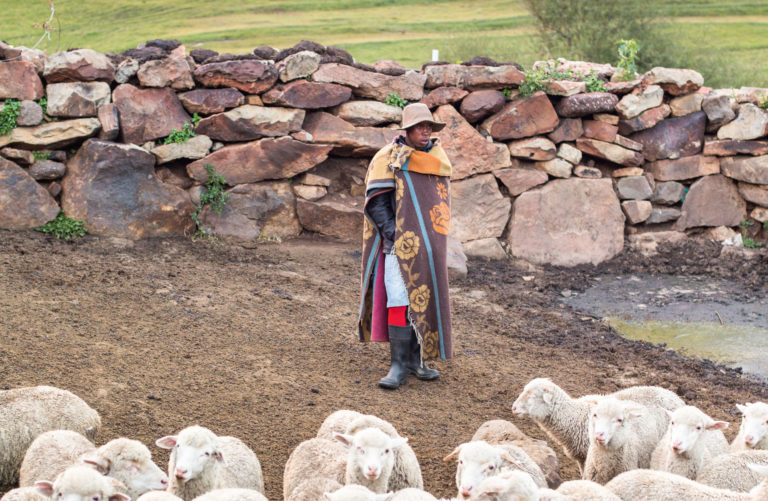
A herder counts his sheep before securing them for the night.
We came across the thin fence-line that separates KwaZulu-Natal from Lesotho. Here the landscape flattened and transformed. Huge red boulders jutted up from the ground, forming archways and castles surrounded by moats. We cantered across sloping foothills, then over the saddle of the mountains and descended into the village of Ha Thamatu, with kids waving shyly and shouting ‘Bye!’ instead of hello. Donkeys shouldered bundles of herbs and dogs barked excitedly at us. Adults greeted all around and our tired horses lifted their heads, home in sight. Their saddles and blankets removed, they were turned out to pasture in thick green grass as we settled in for the night.
We waved our biker friend farewell the next morning and I wandered through the village alone. Ha Thamatu is small and friendly, but one man was friendlier than them all: talkative Ntate Dau. Seeing my interest in his sheep, he beckoned me over and showed me the quality of their wool, spreading the fleece apart with his hands to show the low crimp frequency. Chickens cast long shadows in the morning light and herders roused their flocks. It was just a regular day for the villagers of Ha Thamatu and, for a short while, us visitors could be a part of their flow.
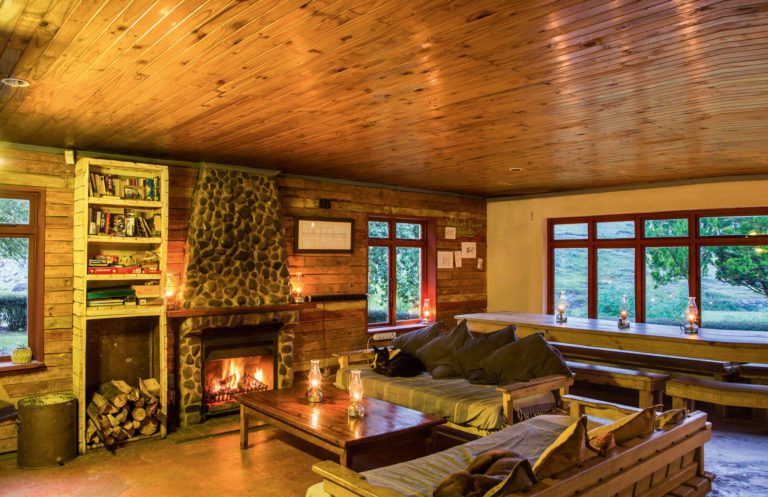
Unwind at cosy Khotso Lodge before and after rides.
Verdict This three-day trail is an exciting horseback journey through areas scarcely seen by tourists. While the trail has been refined over many years, it’s Khotso’s newly-built lodge in Ha Thamatu that offers an authentic insight into life in these seemingly inhospitable mountains.
Factor Both novices and experienced riders alike will be able to do this trail; horses are paired up based on rider weight, height and ability. An adventurous spirit is essential – the terrain is rocky, with sections that must be done on foot, and the weather can change at a moment’s notice.
Cost R6,500 per person, including two nights’ full-board accommodation and guides.
The Details The trail departs from Khotso Lodge in the Underberg. It takes a day to reach Thamatu Lodge in Lesotho, where you’re based for two nights before returning. While at Thamatu, a day-long ride goes through a nearby canyon, past rock paintings and up over the escarpment. Thamatu Lodge has just five rondavels – three sleep four people each in bunk beds; one houses the ablutions and the other is where dinner is served next to a roaring fire. The trail can be done at any time of year; waterproof and warm layers of clothing are essential.
Book 0824125540, khotso.co.za


